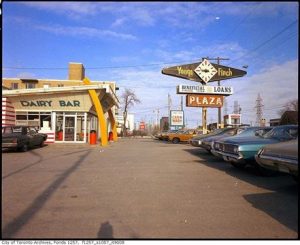 November 2014
November 2014
When it comes to local development, Yonge North Corridor residents often oppose development projects. Residents desire smarter development that mitigates rather than exacerbates existing concerns. Developers and the City appear content with the status quo.
With each new development come assurances there will be a “negligible” impact on the area. Yet residents are plagued by worsening traffic congestion, crowded subway cars and a shortage of funds for local infrastructure development.
Condo developers navigate the current system in a few years after some combination of compromises, development fees and quantifiable data supporting their view that each individual development will have a negligible impact on an area that can support the growing population.
The reality for those who live in the Yonge North Corridor can differ from these claims.
The Problem
Today the northeast corner of Sheppard and Yonge is an example of what some believe to be uncontrolled growth. There is the Sheppard Center redevelopment proposal which includes a new high-rise apartment building, Pearl Condominiums at 4917/4975 Yonge St. and Minto 88 Condos. All complexes will add to current problems on Greenfield and Sheppard Aves. These streets are the only routes to Yonge St. south and Highway 401 for condominium buildings between Doris Ave. and Yonge St. Both streets are heavily congested and dangerous roadways not designed to accommodate current traffic types and volumes. Suggestions that these new developments and a redeveloped Sheppard Centre will have a nominal impact on these currently overcrowded roadways are questionable.
A three minute ride along Yonge St. from Mel Lastman Square to Highway 401 often takes 20 minutes or more. This creates additional traffic problems on Sheppard Ave., Doris Ave., Beecroft Rd. and Greenfield Ave. The situation will only get worse as the approximately 15 high-rise towers currently under development – Hullmark Centre, Emerald Park, Gibson Square and Celsius to name just a few – open. Add to this traffic new developments north of Finch Ave. and those outside the Yonge North Corridor which require access to Yonge St. A currently bad situation may soon become unmanageable gridlock.
As Yonge Street becomes unnavigable so may many of the alternate routes and side streets. The Yonge Street subway line is often standing room only when it reaches Sheppard Ave.
Its ability to support further growth is in doubt.
Proposed Solutions
Today’s solutions to this mess appear to lack serious commitment.
Creating a Highway 401 East ramp from Yonge St. southbound that does not back up traffic for miles has been talked about for decades. Today there is still no firm timing on getting this done.
Extending Doris Ave. south of Sheppard Ave. may be helpful. Once this traffic is south of Sheppard Ave., there needs to be better access to Yonge St.
The currently supported Sheppard Ave. subway extension to Scarborough will add to and not relieve congestion on the Yonge Street line.
Current System is Flawed
Attending local development meetings and information sessions, speaking with local advocates for better development, and meeting with planning department officials suggests that something is amiss.
Developers like or at least have learned to work with the current system. They understand how to get development approved. They are able to undertake their own studies, focus on information that supports their project and ignore data detrimental to their interests.
City planners, while well intentioned, have failed to effectively communicate with residents. There is a perception that city planners do not represent local interests and a belief they have no interest in doing so.
Elected municipal politicians like the current system. It allows them to blame the Ontario Municipal Board rather than seeking an effective way to advocate on behalf of constituents.
Local residents dislike the current system. Residents lack the understanding, organization and financial resources to persuasively oppose developers. At times it appears that city planners supporting developer proposals ignore community implications. It is not always evident that there is a desire to address the cumulative impact of concurrent developments.
Local development meetings tend to be a one-way communication of information as quickly as possible to as few people as possible. Developers and city planners tell residents what they deem relevant. There is no mention of a development’s impact on local roads, subways or other infrastructure. Local development meetings appear to be procedural with community impact being of nominal concern.
Area development should not come to a stop. However, there needs to be more effort to improve communication with and involve local residents if their support is desired.



